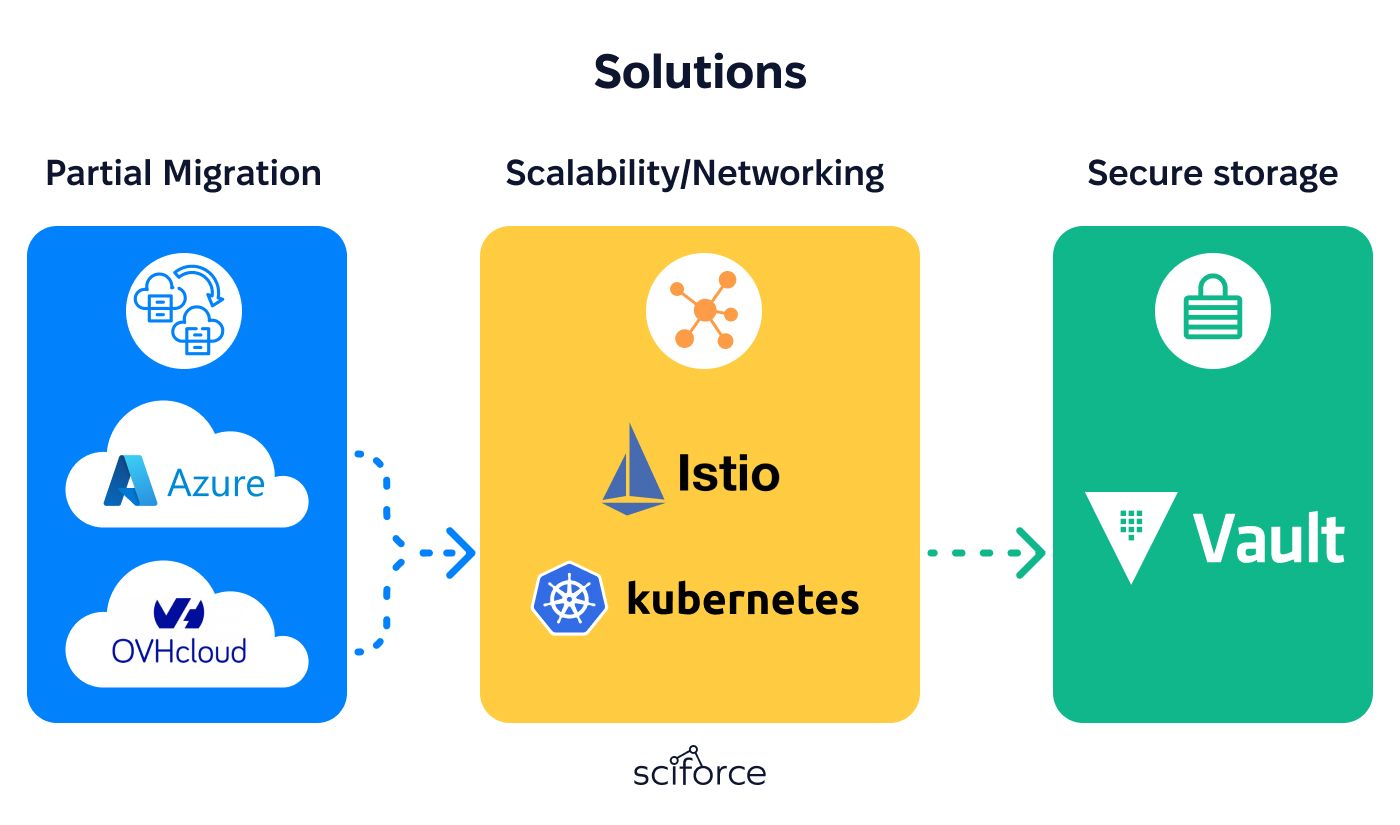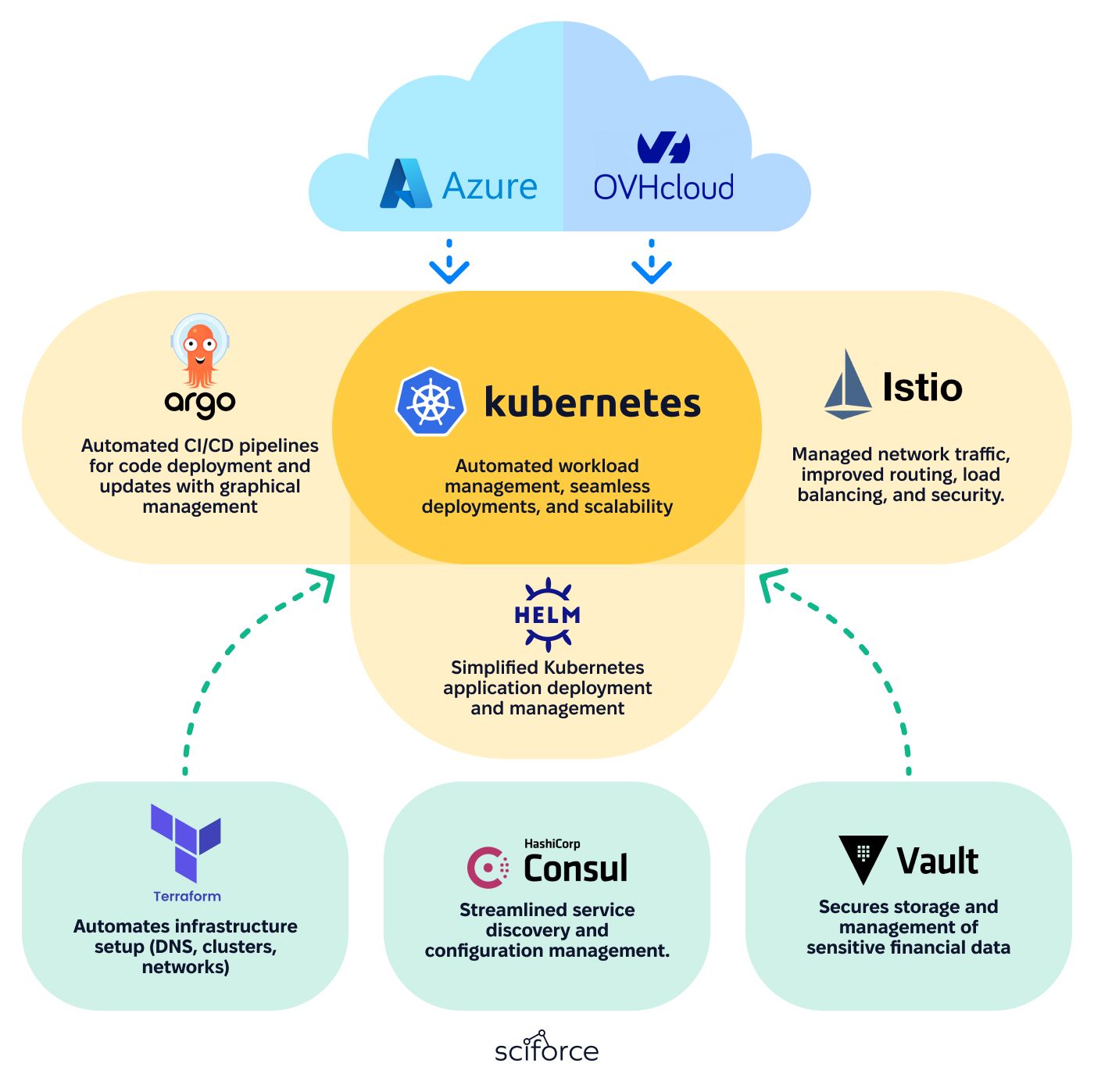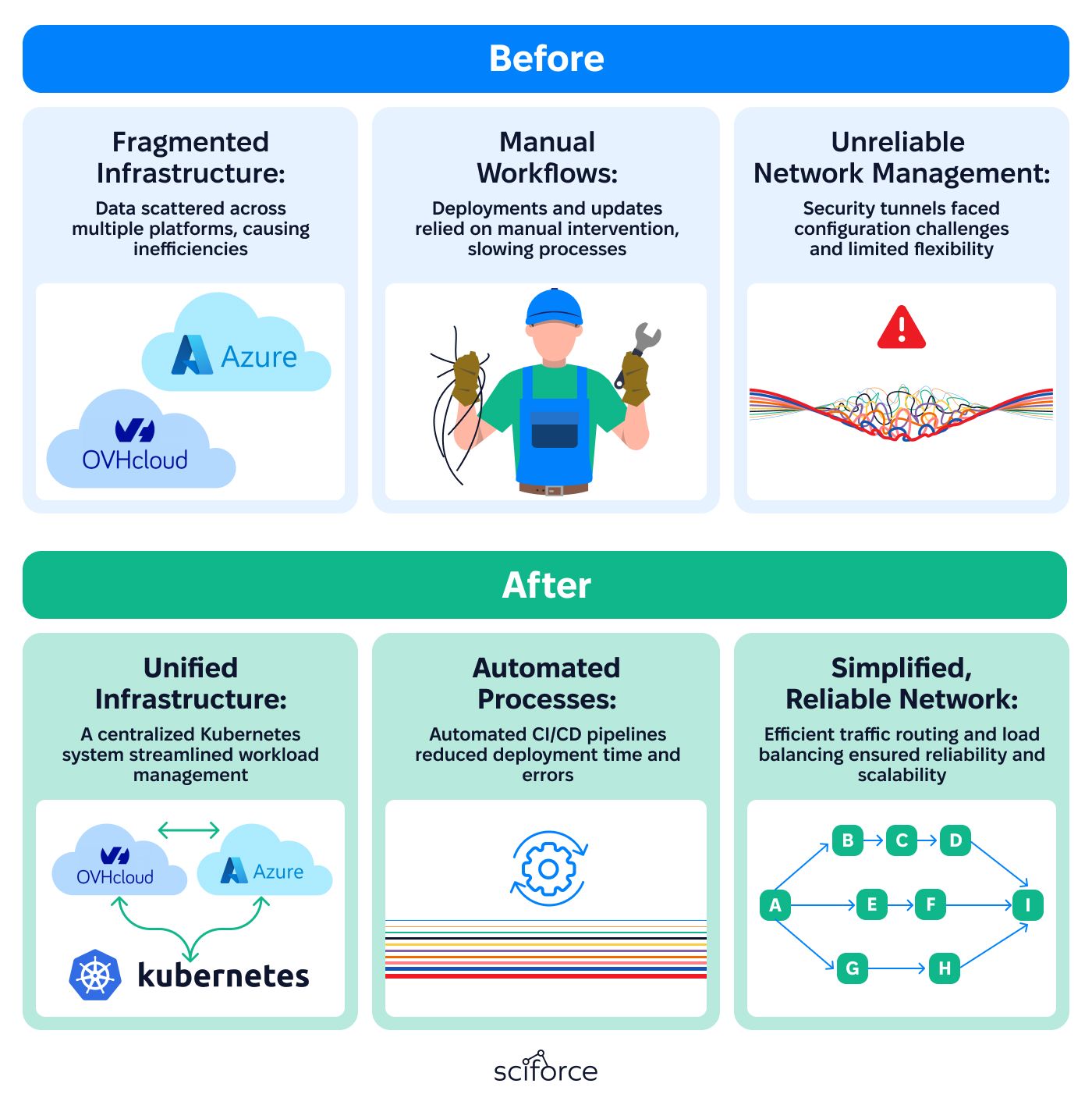1. Data Fragmentation and Overload
The client faced challenges with financial data coming from different platforms in various formats, leading to inefficiencies and difficulties. The large amount of unstructured data made it hard to process, organize, and provide clear, useful insights for their customers.
2. Infrastructure Complexity
The client’s infrastructure was split between OVH and Azure, making it harder to scale and manage effectively. Moving some components to Azure revealed the challenges of maintaining consistency and showed the need for a more unified and flexible system.
3. Security and Compliance Requirements
The financial data needed to meet strict regulations, with secure encryption for sending and strong protections for storing sensitive information. These measures were especially important for passing audits and preventing unauthorized access or breaches.
4. Technical Limitations of Previous Solutions
Previous solutions, such as security tunnels, provided encryption but introduced challenges like complex configurations and unreliable performance in certain situations. The lack of a modern, scalable infrastructure further limited the ability to support growing business needs.
5. Scalability and Automation
The existing infrastructure had trouble scaling efficiently and required a lot of manual work to handle changing workloads. There was also a need to automate deployments and updates across development, testing, and production environments to reduce delays and errors.
The project focused on upgrading the client’s infrastructure and improving how data was managed:
Partial Migration:
Critical components, including on-premise systems and essential services, were moved to Azure to meet urgent needs, while most workloads continued running on OVH. This ensured stability during the transition.
Kubernetes Service Mesh:
Security tunnels were replaced with a Kubernetes-based service mesh, which improved scalability, simplified network management, and ensured reliable traffic control across environments.
Enhanced Security:
Vault was set up to securely store sensitive financial data, providing encryption and compliance with industry regulations. Financial audits confirmed the system’s security and reliability.

The initial setup used security tunnels to encrypt traffic between clients, services, and network layers. While secure, these tunnels were difficult to configure and didn’t always perform well in certain situations. Switching to a Kubernetes service mesh solved these problems by:
This solution created a secure, reliable, and scalable infrastructure that supports dynamic workloads and positions the client for future growth.
1. Terraform Setup:
Automated the deployment of infrastructure resources, such as DNS configurations, Kubernetes clusters, and secure tunnels. This reduced manual effort, ensured consistency, and streamlined resource management.
2. Vault Deployment:
Deployed Vault for securely storing and managing sensitive financial data, ensuring compliance with regulations and future security scalability.
3. Service Mesh Migration with Istio:
Replaced older security tunnels with a Kubernetes-based service mesh, simplifying traffic management, improving load balancing, and enhancing reliability. Infrastructure Distribution
We balanced the workflows across OVH and Azure, ensuring operational stability during the migration while maintaining scalability and continuity of critical services.


1. Modernized Infrastructure
Delivered a fully operational Kubernetes-based system, incorporating automated CI/CD pipelines with ArgoCD. This modernization improved efficiency and streamlined deployments.
2. Enhanced Scalability and Security
The upgraded infrastructure seamlessly handles production and development workloads, ensuring secure storage and transmission of sensitive financial data through Vault and encrypted communication layers.
3. Streamlined Operations
Developers now commit code directly to repositories, triggering automated updates in Kubernetes. This workflow reduces manual intervention, accelerates deployments, and minimizes errors.
4. Improved Network Management
The adoption of a Kubernetes-based service mesh replaced older security tunnels, providing better traffic routing, load balancing, and simplified network configurations.
5. Operational Stability During Migration
Workloads were successfully balanced across OVH and Azure, maintaining stability and supporting critical business operations throughout the migration process.